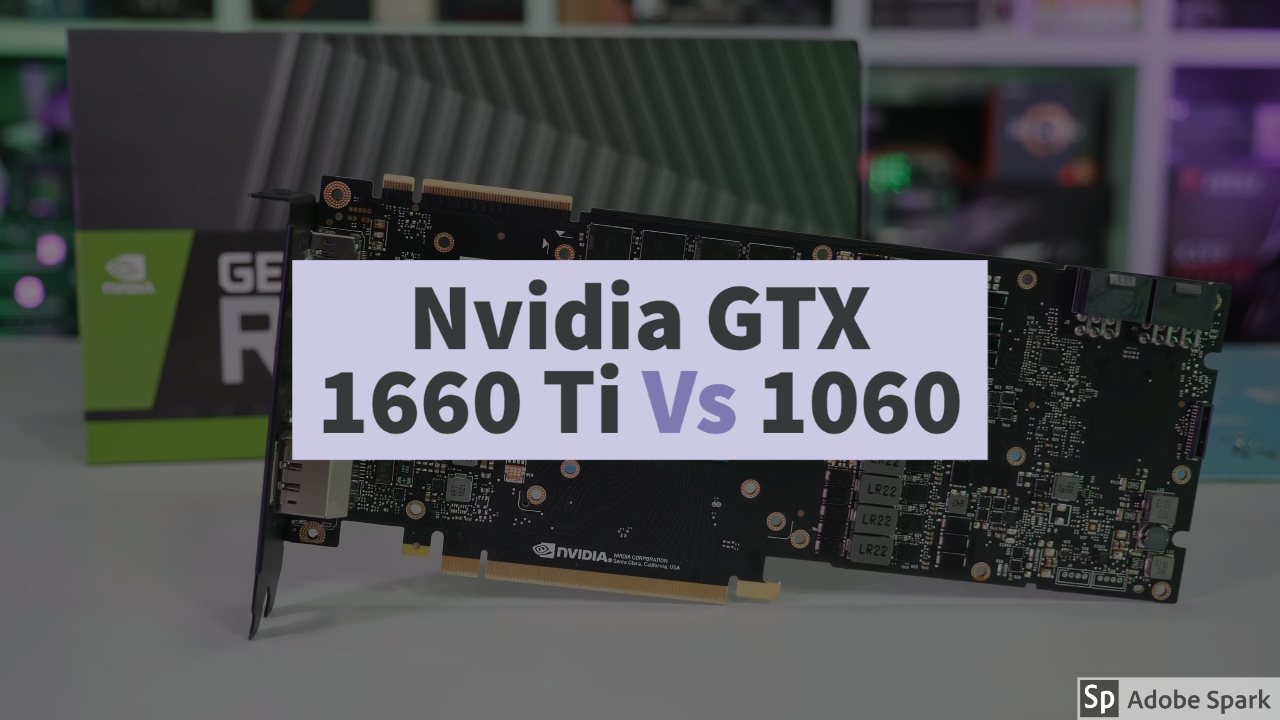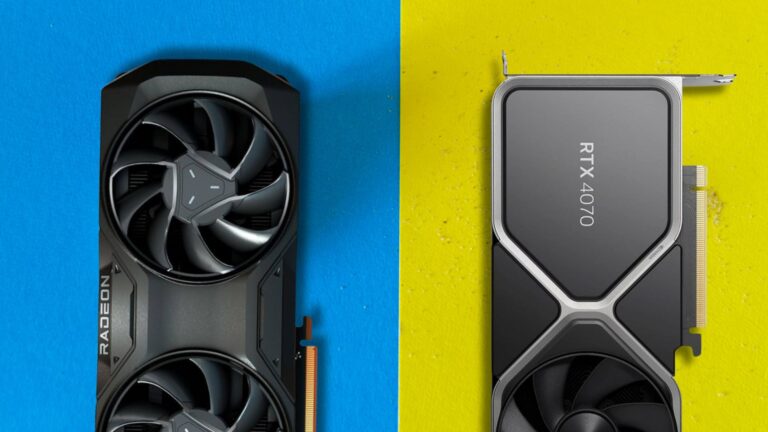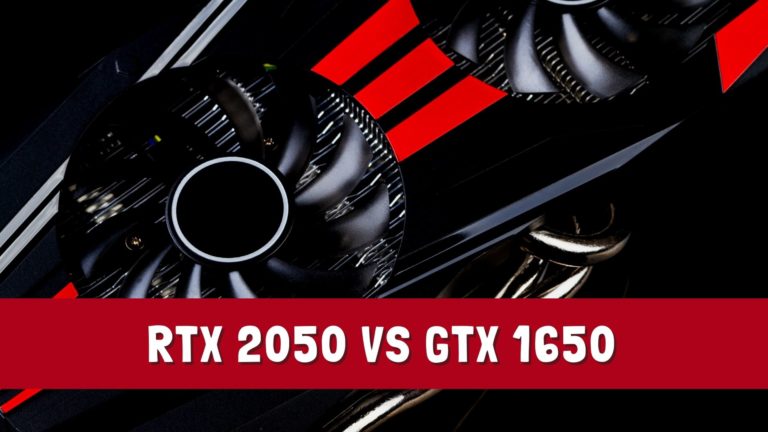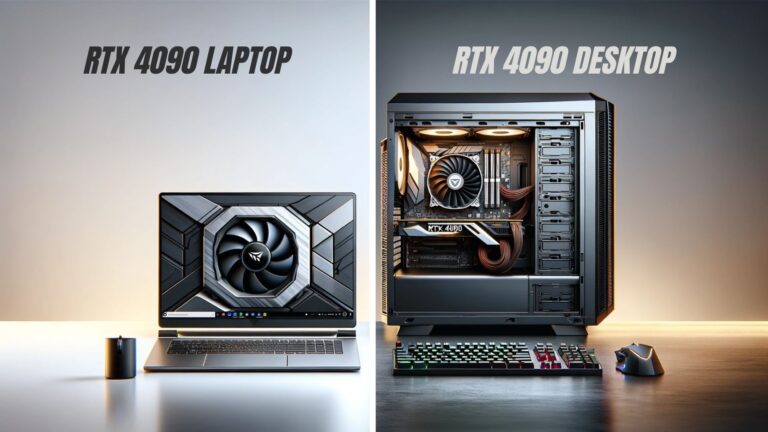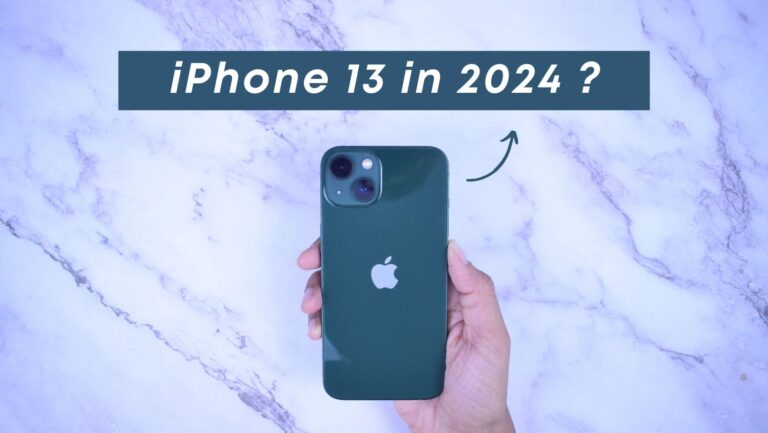The Nvidia GTX 1660 Ti and GTX 1060 are both powerful gaming graphics cards, but which should you pick?
 |  |
|---|---|
| GTX 1660 Ti | GTX 1060 |
| BUY NOW | BUY NOW |
| PROS | PROS |
| Great performance at 1920 x 1080. Acceptable frame rates at 2560 x 1440. Retains Turing’s video encode/decode acceleration features. 120W board power compares favorably to AMD competition. | High-quality 1080p gaming. Incredibly power efficient. Affordable and available. |
| CONS | CONS |
| No RT/Tensor cores mean you won’t be able to try ray tracing or DLSS. | 3GB of RAM isn’t very future proof. Limited RAM already requires texture compromises in some games. |
SPECIFICATIONS
| OVERVIEW | GTX 1660 Ti | GTX 1060 |
| Card Status | Released | Released |
| Manufacturer | NVIDIA | NVIDIA |
| Release Date | 22nd February, 2019 | 24th August, 2016 |
| Launch Price | $279 USD | $199 USD |
| GPU | GTX 1660 Ti | GTX 1060 |
| GPU Model | 12nm TU116-400 | 16nm GP106-300 |
| Cores : TMUs : ROPs | 1536 : 96 : 48 | 1152 : 72 : 48 |
| MEMORY | GTX 1660 Ti | GTX 1060 |
| Memory Size | 6144 MB GDDR6 | 3072 MB GDDR5 |
| Memory Bus Width | 192-bit | 192-bit |
| Memory Bandwidth | 288 GB/s | 192 GB/s |
| PHYSICAL | GTX 1660 Ti | GTX 1060 |
| Interface | PCI-Express 3.0 x16 | PCI-Express 3.0 x16 |
| Thermal Design Power | 120 W | 120 W |
| CLOCKS | GTX 1660 Ti | GTX 1060 |
| Base Clock | 1500 MHz | 1506 MHz |
| Boost Clock | 1770 MHz | 1708 MHz |
| Memory Clock (Effective) | 1500 (12000) MHz | 2000 (8000) MHz |
| Computing Power (FP32) | 4,608 GFLOPS | 3,470 GFLOPS |
PERFORMANCE
SYSTEM SPECS:
The system that I’m testing with –
The same Windows updates and game updates were used for testing, and for drivers I’m using the newest available at the time of testing, 430.86 for the Nvidia GTX 1660 Ti and GTX 1060, so let’s get into the results.
GRAPHICS CARD USED:
Apex Legends

Let’s start out Apex Legends, which was tested with ultra settings. In terms of average FPS the Ti was 33% ahead of the 1060 at 1080p, then a much larger 34% ahead at 1440p.
Battlefield V

Battlefield 5 was tested in campaign mode rather than multiplayer, as it’s easier to consistently reproduce the test run. The 1660 Ti was 24% ahead in average FPS at 1080p, rising up to 25% faster at 1440p.
Fortnite

Fortnite was tested with the built in benchmark using ultra settings, I found both cards to deliver a fairly playable experience with ultra settings, even with 1440p, however the Ti was getting 27% higher average FPS here, and 25% higher at 1080p.
Forza Horizon 4

Forza Horizon 4 was tested using the built in benchmark with ultra settings, and once again the 1660 Ti was coming out ahead. At 1080p we’re looking at a 20% improvement to average frame rate, increasing to 21% higher once we turn the resolution up to 1440p.
Hitman 2

Hitman 2 was tested using the replay feature with the exact same replay on both graphics cards. This was another game that I thought was easily playable on either card, even at 1440p with ultra settings in use. In terms of the differences to average FPS though, at both resolutions GTX 1660 Ti was 29% faster than 1060.
Just Cause 4

Just Cause 4 was tested with the built in benchmark at ultra settings. The actual game performs a fair bit ahead of this, so this is more of a synthetic test rather than representative of actual game play, but it does allow me to accurately compare between the two graphics cards. With that in mind, the Ti card was achieving 24% higher average FPS at 1080p, rising to almost 25% at 1440p.
Metro Exodus

Metro Exodus was also tested using the built in benchmark with ultra settings. This seems to be more of a graphically intensive test, and the Ti was coming out almost 21% ahead in average FPS, and about the same at 1440p as well.
Rainbow Six Siege

Rainbow Six Siege was tested using the built in benchmark at ultra settings. This is a game that I’ve found to prefer Nvidia’s new Turing architecture, so we’re getting fairly good results with either card here. At 1080p there was a 36% improvement with the Ti and then similar at 1440p, almost reaching 36.7% faster.
Resident Evil 2

Resident Evil 2 was tested with the Ulletical FPS benchmark, and both cards were delivering very good frame rates as usual. At 1080p the Ti was 32% ahead of the 1060, and then 31% ahead at 1440p.
Shadow of the Tomb Raider

Shadow of the Tomb Raider is a resource intensive game and was tested with high settings. In my opinion this one doesn’t need a high frame rate to play, I can get by with a solid 30 FPS, so both cards were giving me very a playable experience at 1440p. As for the differences, at 1080p the Ti was 36% ahead in average FPS and 37% at 1440p.
CONCLUSION
When we just look at the difference between cards, you’re paying 24 to 27% more for 20% more performance on average at 1080p, or 18% more at 1440p. With that in mind, if I was buying new today, I’d pick the 1660 Ti, mostly because it’s giving fairly good results at 1440p which is a resolution I personally prefer.
If you’re just targeting 1080p though, as we’ve seen the 1060 is definitely capable even at higher settings, and even still does ok in many games at 1440p. You’ve also got the option of overclocking the 1060 to get extra performance too, although you could also overclock the Ti.
If you have a 1060 at the moment, well I wouldn’t say you need to upgrade, it can still handle games well, but the 1660 Ti does offer a nice boost.
Let me know which of these two GPUs you’d pick and why down in the comments.
